Well, you saw our unwrapping video yesterday, and now we have our review of the album to go along with the official street date in Japan. Final Fantasy Gaiden -Four Warriors of Light- features Naoshi Mizuta, who most people know for his work on Final Fantasy XI, but don’t let that lead you down the path to thinking Four Warriors of Light sounds anything like Final Fantasy XI.
This soundtrack is distinctly retro, yet modern, if that makes any sense. I think we have arranger and synthesizer operator Mitsuto Suzuki to thank for the amazing quality sounds here, but Mizuta really shines with his upbeat themes for this lighthearted adventure.
See what I mean in our review of the Final Fantasy Gaiden -Four Warriors of Light- Original Soundtrack after the jump.
So, first off, there are 41 tracks on this album, meaning that most of them will run quite short. That’s quite alright though, as there are a number of great tracks here to enjoy. The album opens with “The Four Warriors of Light Main Theme,” a triumphant orchestral track that works in chip elements that work amazingly well together. If this description sounds familiar, that’s because it’s the track that was featured on the Square Enix Music Sampler CD Vol. 4 that we reviewed after TGS 2009. It’s a lovely opener, and really gets the retro fantasy vibe going right from the start.
The next track, “Horn, Home of the Wind” is another retro one with a sweet chip flute that calls out into the distance while the other elements sort of bounce along to create a cheery yet subdued foundation. There’s also a night version that follows, which is much more peaceful and is also a wonderful listen. The day and night cycle can also be heard with “Walking the Earth,” a funky and “skippy” overworld theme that takes the main theme and makes it even more epic. Next, “Royal Palace Melody” is surprisingly mellow. I guess measured is the word I’d use to describe it, but it almost sounds like one of the night themes heard elsewhere on the album.
Unfortunately the battle themes, titled “Battle with Demons” and “Strong Enemy” aren’t quite as riveting. They also combine chip and orchestral elements, but aren’t nearly as catchy as the rest of what’s here. “Cave of Wraiths” and “The Witch’s Mansion” are minimalistic dungeon themes that get the dark and mysterious atmosphere down. The former doesn’t really offer a whole lot to keep listeners interested, but the latter provides a great, spooky experience.
It’s then back into day and night town themes, starting with “Magic Kingdom Gura” that I swear sounds like something right out of Final Fantasy XI with its Celtic-inspired sound. “Liberté, the Capital of Art,” on the other hand, sounds light and dainty, which is pretty funny given how pretentious the town’s name is. I prefer the dreamy, drawn-out night version of this theme best. “Trading City Urpes” is the catchiest of this set of three, working in guitars and a whimsical flute melody that plods along at a walking pace.
“The Legendary Whale” is a majestic track with some great orchestral work, while “Closed Off-Invidia” stands out mostly for its 4:39 length, which is nearly 2-4 times longer than most of the tracks on the album. It’s an otherworldly piece that moves along slowly and contemplatively, packed with reverb on the chip and belltone instruments to give it a distant sound. “Riding the Dragon” is a beautiful piece that really drives home the image of flight with its airy melody with an ascending harp melody that eventually gives way to a rapid bass section that gets the blood pumping.
“Heavenly Supervia” sounds like a quiet place with its thin, minimalistic approach. “Cursed Town” sounds equally empty, but manages to work up quite a sense of spookiness with its arpeggiated synth leads and melancholy flute melody.
Getting to the final stretch, “Close Call” is very intense with its stabbing synth lead, wide and repetitive bass section, and tense string section, while “Another Dimension” sounds absolutely dreadful with its droning bass that sits in wait throughout the majority of the piece, and a mournful flute melody that hints at what’s to come. “Heartbeat of the Devil” is a powerful piece that sounds determined and resilient before the heavy-hitting “Final Battle” comes in sounding as tense as you’d expect from a final battle theme. It’s not overly active like many oldschool battle themes, but is rather controlled and foreboding.
With the final battle out of the way, we’re treated to the absolutely gorgeous “Journey’s End” which marks the first appearance of the piano, which is backed up with a beautiful string melody to create a lovely ballad. It sounds like this piece wanted to have vocals, but if anything, this track makes me look back to a simpler time when composers had no problem writing emotional pieces of music that didn’t have to rely on the human voice. Finally, “The Journey Never Ends” is quite a whopper at 6:16, and is a triumphant fanfare that works in many of the best themes from the game, including the main theme and “Horn, Home of the Wind.” It’s a great way to close out a great soundtrack.
So there you have it. From our video yesterday, you already know that the packaging is amazing. There’s lots of great pixel art of various items in the game, and also of the game’s characters in different job outfits. The album is out today in Japan, and even if you’re not the biggest fan of Naoshi Mizuta, I recommend checking this one out, as it just may change your mind. I’m looking forward to hearing more of what he’s capable of in the future. You can buy it now at Play-Asia.
Do you have an opinion one way or the other about Naoshi Mizuta’s music? Have you been looking forward to the release of the Final Fantasy Gaiden -Four Warriors of Light- Original Soundtrack?
[Special thanks to Brandon Robison and Shota Nakama for additional track title translation]
Tags: Final Fantasy, Final Fantasy Gaiden, Four Warriors of Light, Mitsuto Suzuki, Music Reviews, Naoshi Mizuta, Reviews, Square Enix





























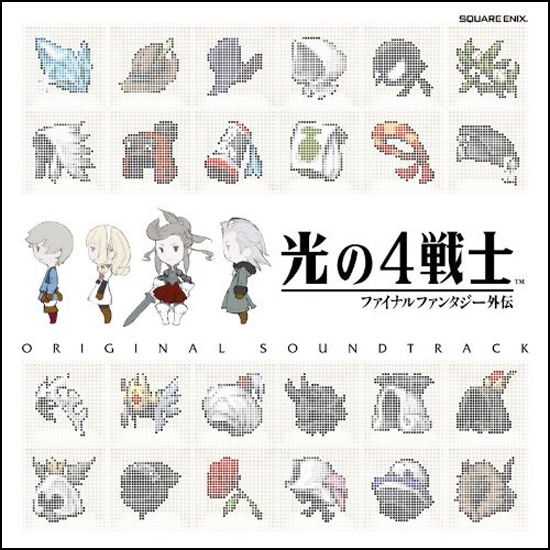
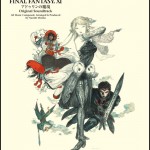
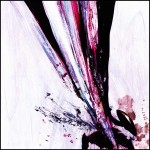
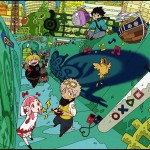
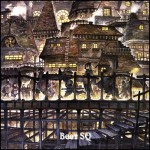







Mitsuto Suzuki <3